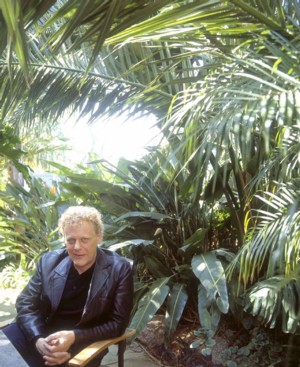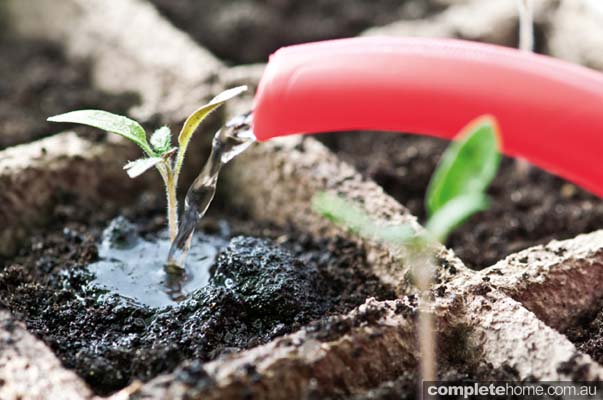Papa grew the best plums I’ve ever eaten. They were tangy. Their skins made my mouth water and their dark, sweet flesh was sheer joy. His garden was a garden of delights — apricots and plums were abundant. He had multiple lemon trees, which meant we could make lemonade — real lemonade with lemon juice, sugar, cracked ice and chilled water. He grew mint, beans, peas, snowpeas, butter beans, capsicum, carrots, broad beans and every kind of lettuce to make the never-ending salads that featured every kind of tomato.
Some people don’t grow vegetables or fruit because they have no history of it. Others don’t grow them because it means their grandparents or parents really have died. The memories of childhood survive long after loved ones, their gardens and their passions. We enshrine them and nurture the memories of them. In my case, it involves not growing plums or apricots or table vegetables because I don’t want to steal Papa’s thunder — not even when his garden and he are long gone. Gardening is personal. It’s joyous and wonderful and the healthy alternative to everything.Some find this reward in a magnificent crop of tomatoes. Others proudly display their orchids or smell their roses or marvel at their native garden, especially when it attracts those little metalliccoloured gold and green birds that build hanging nests. It requires driving out the sparrows to attract them. That and lots of flowering natives. The garden is a living world that presents an opportunity to create something magical or marvellous, outrageous or glorious or mysterious.
American children renting nearby once peered through the newspaper post tunnel that the newspaper is never delivered into and declared “Omigod, it’s Honey I Shrunk the Kids!” I love jungle. I love the chaos of that verdant, fecund world that engulfs human endeavour and reduces it to mulch. It requires over-planting, over-feeding and over-watering and then creating a ground zone so layered with mulch and vegetative matter and disincentives to exotic birds, such as smashed granite, that water cannot easily evaporate from below the understorey. I thought it through.
In the jungle, the mother palm or whatever she is, scatters her seeds helter skelter and they take and then fight it out for dominance. There are deaths and there is stunting, but some stronger plants survive and come, ultimately, to challenge her authority. This is true of virtually everything I planted. One specimen palm is lovely, but the fun begins when one plants 10 tiny saplings in the same hole. When the nutrient allows, they all thrive; when one dominates, an understorey of various levels is created. I’ve heard them grow. I’ve seen their fronds unfurl in the summer humidity. Their deep lime-green tones are the perfect backdrop to the darker green of monstera and philodendron, gardenia, kangaroo paws, hibiscus and as many members of the genus Musa as I could encourage to form their massive clumps and reward me with their gaudy, spectacular birds-of-paradise flowers.
One cousin of the strelitzea gave me a bell of sugar bananas, but though it was an unusually humid year it was not humid enough for them to ripen. An unripened but large banana bell makes a wonderfully sculptural centrepiece for a large dining table. It’s all about the drama and the sense of life’s vibrant moods in my garden with its bold, dramatic sculptural forms, its aggressive plants clumping and vying with other equally bold and dramatic plants to win their place in the sun.
A garden is a personal journey for those who wish to connect with living things and with the earth in which they thrive. Things begin to look different. I’ve dived into the pool in the middle of winter to rescue a large earthworm because I’m fond of worms. I feed them and use smashed granite to keep them safe from the birds that scratch for a moment and then realise they cannot win a meal from my garden.
For several summers, they became the meal after the owl moved in. The little grey furballs the size of golfballs alerted me to its presence. The bush rats vanished. The brown birds and sparrows disappeared and then the owl moved on. Lizards of all sizes live in my garden and geckos feast on mosquitoes at this time of year. Crickets and cicadas chirrup and my garden is a living place, hosting many species, including galahs and parrots that infest my palms for about six months so they can feed on the palm nuts. The memory of Papa’s buffalo grass lawn, his neatly managed rows of vegetables and his plots of fruiting trees define exactly the garden I loved as a hungry child wanting to celebrate summer stone fruit. But the garden of my youth, with its vast rockeries and densely planted shrubs, probably inspired me to create the jungle garden I love now.
There was a fall to the block I grew up on, which Dad used to create a rocky world with cascading plants and defining shrubs, like rhododendron and camellias and azaleas. They were very beautiful, but the delicacy of their flowers made me cautious. I didn’t want to harm them. I decided then that I would rather tough it out with plants. Bougainvillea was inevitable, as were spiky palms. I removed the bougainvillea because I didn’t like the die-back. I never objected to being lanced by my plants; bleeding into the soil around them seemed strangely like a ceremony that bound our fates together … ridiculous, I know, but we form strange and mysterious relationships with our plants, Something happens when you connect with the earth. Some energy is transferred. Tension is absorbed by the earth. It makes sense to talk to the plants and tend to their needs because the reward is strangely tangible, while mysterious. whatever they might be. They respond and somehow we secretly understand the tree huggers.
I killed all the black bamboo I planted by fertilising it. Killing tough, hardy plants — oftentimes the ones we call “weeds”’ — is easy; just feed them. Forget poisons. Fertiliser poisons them because they’ve evolved to thrive in conditions of privation. Feed your enemies and they will die and feed your garden. The wonderful thing about gardening is how it teaches simple lessons and simple solutions. While so many are talking of bizarre schemes to support polluters financially while taxing emissions — the details are occult to me — the simple solution is one all gardeners will understand well: sequester carbon by planting fast-growing annuals because, tonne for tonne, all we grow sequesters that weight of carbon. Hemp is the obvious crop because it will thrive in semi-arable land, quite apart from its diverse uses for cloth and paper. The first margarine was made from hemp oil by the Latvians, who called it “black butter”. If we gave over 3 per cent of arable land to hemp production, or spelt wheat or other annuals, we could accommodate all of Australia’s annual carbon emissions and give work to a lot of unemployed people of all ages, and not levy taxes except on the polluters, who should be paying for it.
Since I’m preaching … where there are no access points — that is, where it’s possible to do this — plant out your nature strip. It sequesters carbon from the air where you live. Many plants are arid lovers, unlike grass. Also, it stops the trees in your nature strip from searching for water, buckling the footpaths and cracking your front fence. I’m amazed people aren’t suing councils for damage to their property from the trees on nature strips. In my garden I created a world that looked like the kind of place I would choose to visit for a holiday because I love the tropics — which I don’t need to visit now because I live in a kind of tropical paradise, complete with parrots and a micro-climate that seems to keep it warmer in winter and cooler in summer, and always fresh.
Gardening teaches simple lessons. It reveals the seasons. It connects us with the life force. It frees our minds, just as it keeps our bodies supple. It feeds our bellies, our minds and our spirits. And, long after we’ve gone, our loved ones will enshrine the sweet memories of our labour of love and speak kindly of who we were and what we allowed the life force to do.




